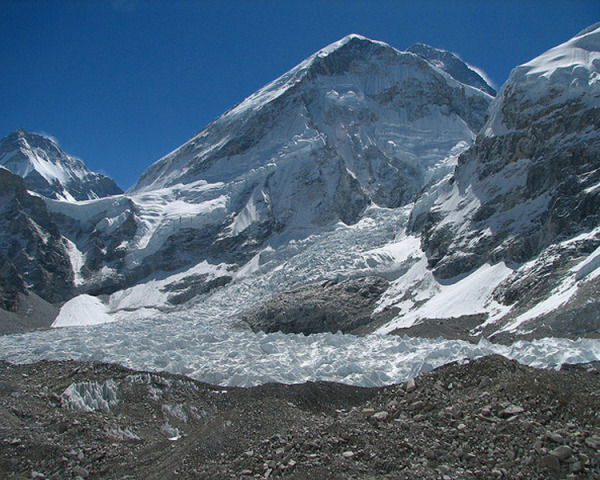Nepal is a landlocked country, boasting of a multi-cultural and multi-ethnic identity. Read further and learn some fun & interesting facts about Nepal.
Facts About Nepal
A landlocked country in South Asia, Nepal stands bordered by China in the north and India in the south, east and west. The country, which was initially a monarchy, ruled by the Shah Dynasty and was eventually declared a Federal Democratic Republic, through a bill passed by the Interim Parliament, on 28th December 2007. The declaration was officially implemented in the first meeting of the Constituent Assembly, which was held on 28th May 2008. A multi-cultural, multi-linguistic and multi-religious country, Nepal boasts of a varied landscape, ranging from Terai plains in the south to mountainous Himalayas in the north. This beautiful country is also home to the highest point on Earth called ‘Sagarmatha’ in Nepali. Known as the home for Rhinos and also the hub for cheap ‘fast food’ such as chicken or meat dumplings, Nepal also has a booming tourism industry. If you would like to learn more facts about this place, then in the following lines, we have provided more information on Nepal.

Image: Dhilung Kirat@flickr
Fast Facts
Continent: Asia
Area: 147,181 km2
Capital: Kathmandu
Population: 26,494,504 (2011)
Currency: Nepalese Rupee
Official Languages: Nepali
Calling Code: +977
Type Of Government: Federal Government
Fun & Interesting Facts About Nepal
- The official language of Nepal is Nepali. Apart from that, English and a number of other languages are also spoken there.
- Majority of the people in Nepal are Hindus, followed by Buddhists and Muslims.
- The main ethnic groups in Nepal include Chhettri, Brahman-Hill, Magar, Tharu, Tamang, Newar, Muslim, Kami and Yadav.
- The currency of Nepal is Nepali Rupee.
- The capital of Nepal is Kathmandu.
- Nepal follows the system of ‘Federal Democratic Republic’.
- Nepal is one of the poorest and least developed countries in the world.
- Lumbini, the birthplace of Lord Buddha, is located in Nepal.
- Nepal's Flag is the only national flag in the world that is not quadrilateral in shape.
- The modern state of Nepal was formed on 21st December 1768, after the ‘Unification of Nepal’ by Prithvi Narayan Shah.
- Tourism, carpets, textiles, small rice, jute, sugar, and oilseed mills; cigarettes; cement and brick production are the main industries in Nepal.
- Eight of the highest peaks of the world are situated in Nepal.
- Mount Everest (8,848 meters), the highest peak in the world, forms the highest point in Nepal.
- Nepal is home to over 180 species of mammals and 800 species of birds.
- Initially, Kathmandu was known as Kantipur, meaning City of Glory, which is now the name of a Nepalese daily newspaper.
- Right from 1846 to 1951, Nepal was governed by hereditary Prime Ministers, who descended from Jung Bahadur Rana.
- It was in 1951 that dominance of the Nepalese crown was restored and a government was formed by the Congress Party.
- Since the year 1996, Nepal was a victim of insurgency (the People's War), led by Communist Party of Nepal (Maoists).
- Nepal has the highest concentration of World Heritage Sites, with the Kathmandu Valley alone having 7 World Heritage Sites in one place.
- Violence in the Royal Family of Nepal, said to be perpetrated by Crown Prince Dipendra, led to the death of the King and Queen, apart from the prince’s brother, sister, an uncle, and several aunts. Later, the prince shot himself too and died. Thereafter, the crown was assumed by Gyanendra, Dipendra’s uncle.
- Gyanendra declared a state of emergency in Nepal in February 2005, which lasted till April 2005, and assumed direct control of the country.
- The direct rule of King Gyanendra lasted till April 2006, after weeks of protest by the people.
- The Parliament of Nepal restricted the political powers of the king, in May 2006.
- In December 2007, the Parliament of Nepal took the decision to abolish monarchy.
- The Annapurna region in Nepal was voted as one of the top 10 trekking places on earth.
- Nepal is the only country with altitudinal variation that ranges from 70 meters to 8848 meters.
- In Nepal, touching anything with your feet is considered as an offence.
See also
More from iloveindia.com
- Home Remedies | Ayurveda | Vastu | Yoga | Feng Shui | Tattoos | Fitness | Garden | Nutrition | Parenting | Bikes | Cars | Baby Care | Indian Weddings | Festivals | Party ideas | Horoscope 2015 | Pets | Finance | Figures of Speech | Hotels in India : Delhi | Hyderabad | Chennai | Mumbai | Kolkata | Bangalore | Ahmedabad | Jaipur
- Contact Us Careers Disclaimer Privacy Policy Advertise With Us Lifestyle Sitemap Copyright iloveindia.com. All Rights Reserved.







